Affiliate links on Android Authority may earn us a commission. Learn more.
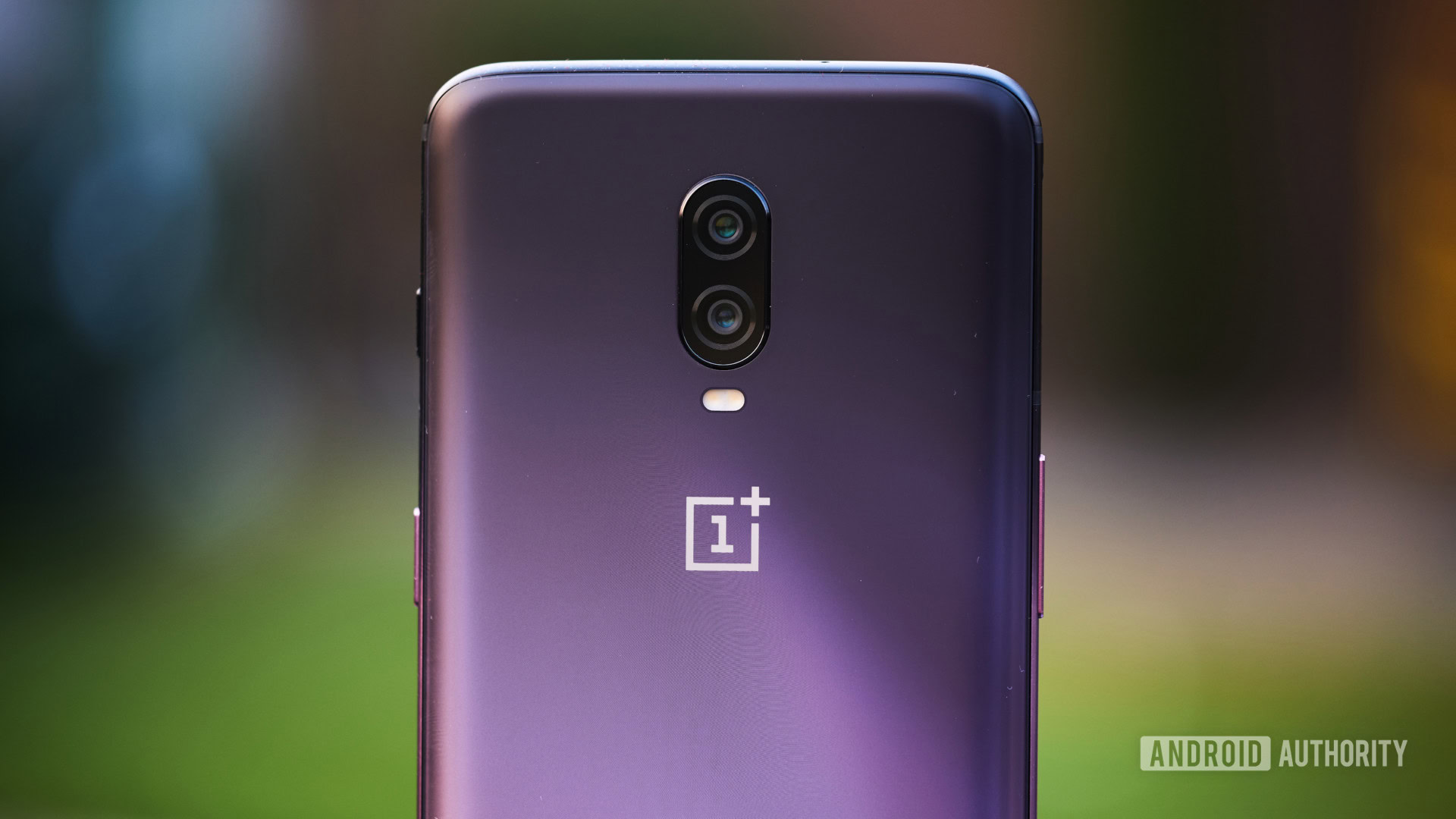
OnePlus 6T review: Fundamentally great (Video)
Published onNovember 19, 2018
OnePlus 6T
What we like
What we don't like
Our scores
OnePlus 6T
Update – December 31 – The OnePlus 6T McLaren Edition has launched, which has a black carbon fiber design with McLaren’s signature “Papaya Orange” color around the rim, along with 256GB of storage and 10GB of RAM, plus a special 30W “warp charge 30” charger that gives the phone’s battery a full day’s worth of use in just 20 minutes. All of the other hardware specs are the same as in the reglar OnePlus 6T.
Original review – The OnePlus 6 is one of my favorite Android phones ever. The hardware is simple and streamlined, providing a blank slate for its incredible software. The OnePlus 6 nails the fundamentals first, before adding complexity to the system.
The OnePlus 6T is largely the same, with a few key differences. The changes the 6T makes are few and far between, but its improvements are big ones — as is its one new downside.
It’s impossible to review the OnePlus 6T without consistently comparing it to the OnePlus 6. While this review will focus on what’s new with OnePlus’ new flagship, it will also compare it to the last device, which is less than six months old.
Read our full OnePlus 6T review to find out more.
The OnePlus 6T review unit was provided to Android Authority by OnePlus.
Design
I’ll be upfront: I like the design of the OnePlus 6 a bit more than the OnePlus 6T. While there isn’t a huge differential between the two, it’s the small things that give the OnePlus 6 the edge for me. The 6T is a bit thicker, with a more defined curve to pack a bigger battery. OnePlus says users will enjoy the curve in their hand more than the flat design of the OnePlus 6. Personally, I’m not one of those people, but the 400mAh of extra battery capacity makes this design change just about worth it.
The display of the OnePlus 6T has a slightly smaller bottom bezel than the OnePlus 6, but honestly, the delta is hardly noticeable. The biggest physical change seen on the front of this device is the new teardrop-style notch.
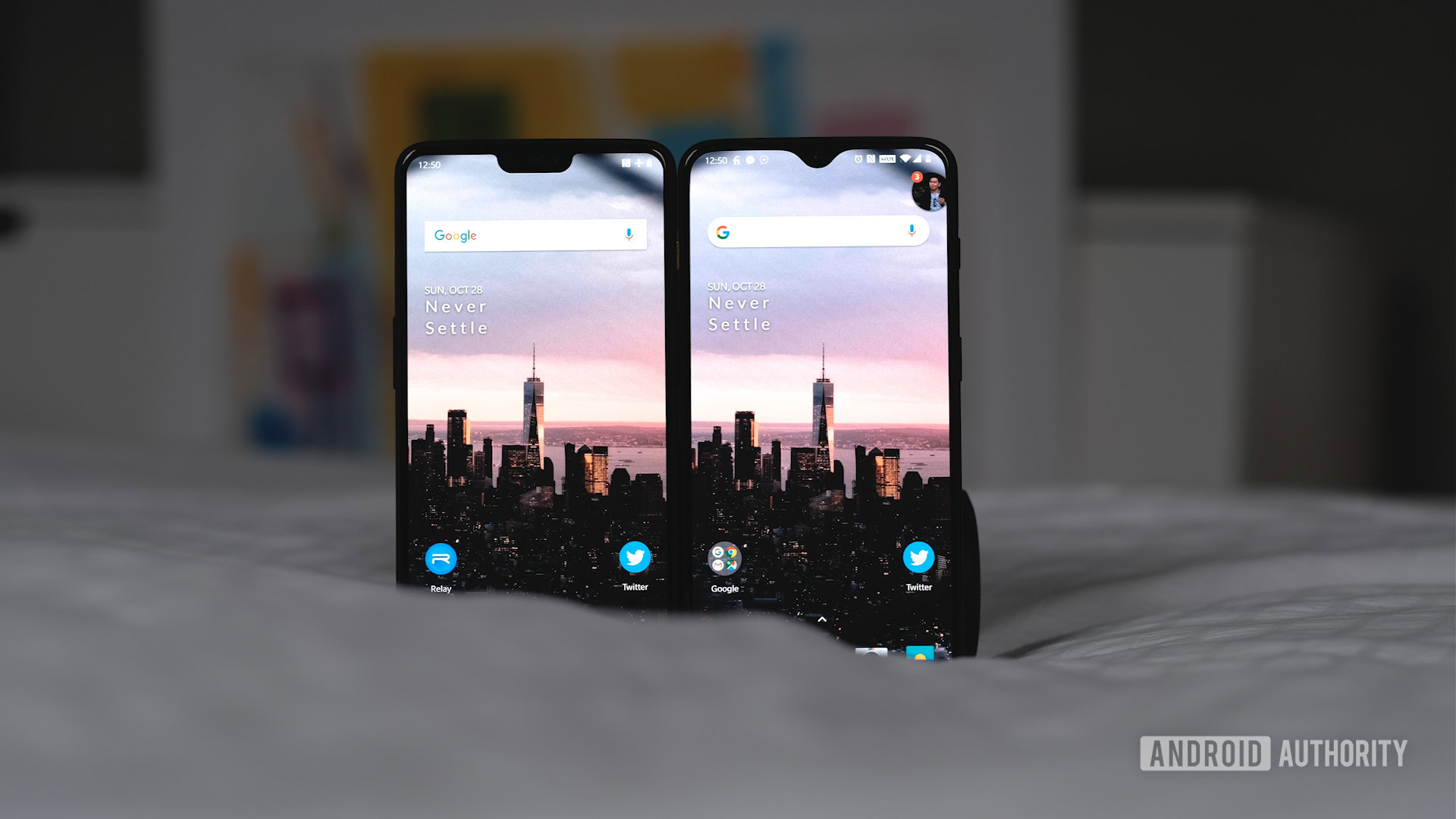
While the OnePlus 6’s notch was quite small in its own right, the 6T reduces the notch even further, resulting in an obstruction hardly larger than the single front-facing camera. OnePlus managed to shift the earpiece into the frame of the device, allowing for a noticeably reduced notch. I didn’t think this would make that big of a difference, but it was definitely noticeable while watching fullscreen content.
Related: Best OnePlus 6T accessories
On the bottom of the device you’ll find a USB Type-C port and two speaker grills. Sadly only one of the grills is real. I really would have loved to see stereo speakers on this device, and the fake speaker grill seems like a pretty major waste of space. I suppose we’ll have to hope for one in the OnePlus 7.
I don't buy OnePlus' reasoning for removing the headphone jack.
OnePlus has also removed the headphone jack, apparently to increase battery capacity and make the sound chamber bigger. I don’t really buy this reasoning. I understand we now live in a world where the headphone jack is as good as dead in mobile devices, but it’s frustrating having one less company keeping it alive.
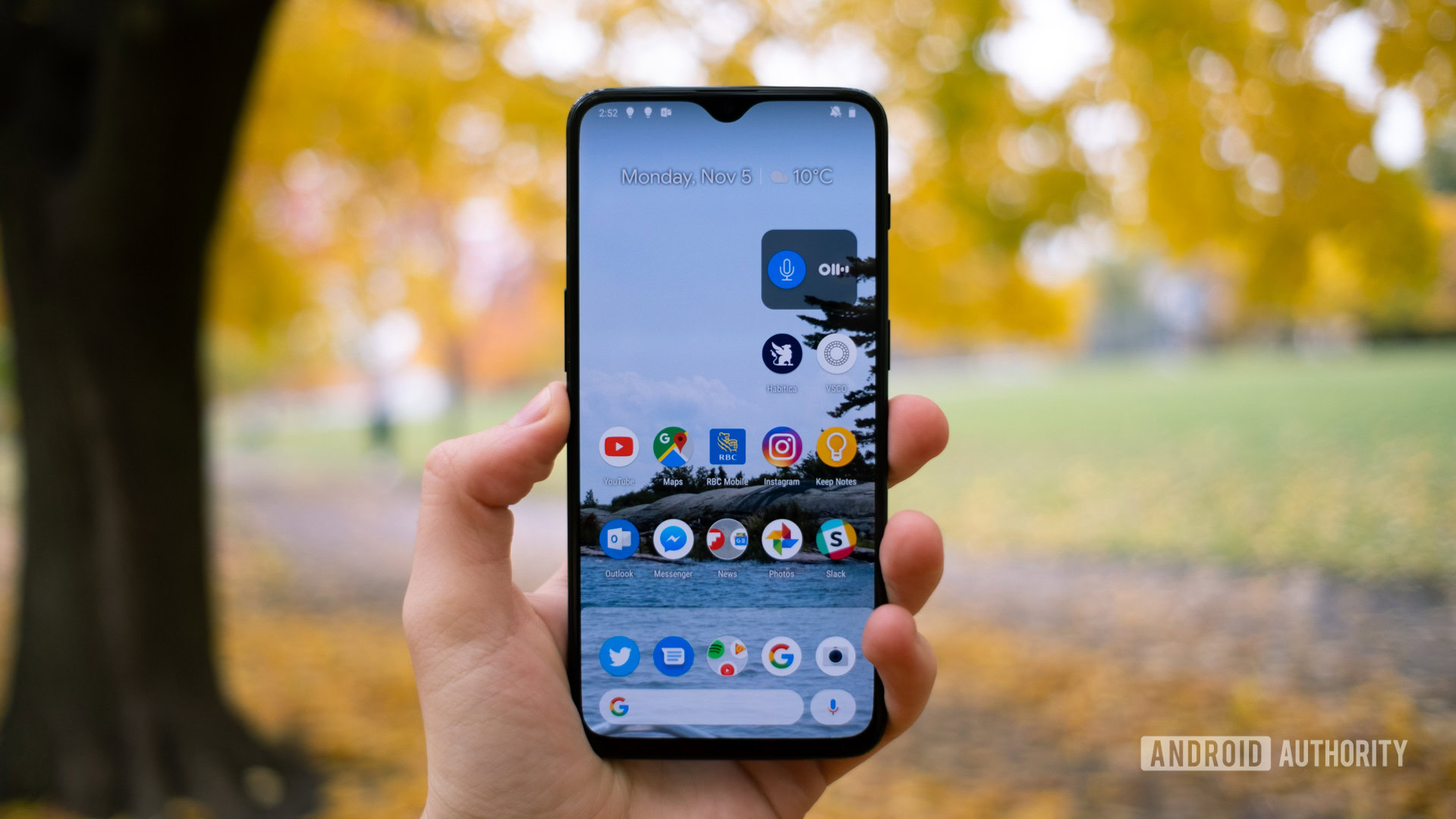
Display
The OnePlus 6T sports a 6.41-inch optic AMOLED display with a resolution of 2,340 x 1,080 and a pixel density of 402ppi. If you’re worried that 1080p isn’t good enough, don’t. You probably won’t notice the difference between 1080p and 1440p unless you’re watching content specifically tailored for that resolution, and almost all mobile content looks great in 1080p.
The phone also offers a variety of different screen calibration modes upon setup, including system default, sRGB, DCI-P3, Adaptive mode, and a user-defined custom calibration profile. I left it on default, but you can always toggle these modes on and off if you want to try a different setting.
The display of the OnePlus 6T is also technically brighter than the OnePlus 6, but again the delta is hardly noticeable. The screen looks good in nearly all situations, and it doesn’t have much trouble in direct sunlight. OnePlus also offers extra features like reading modes to help you use the screen more comfortably in the evening and before bed.
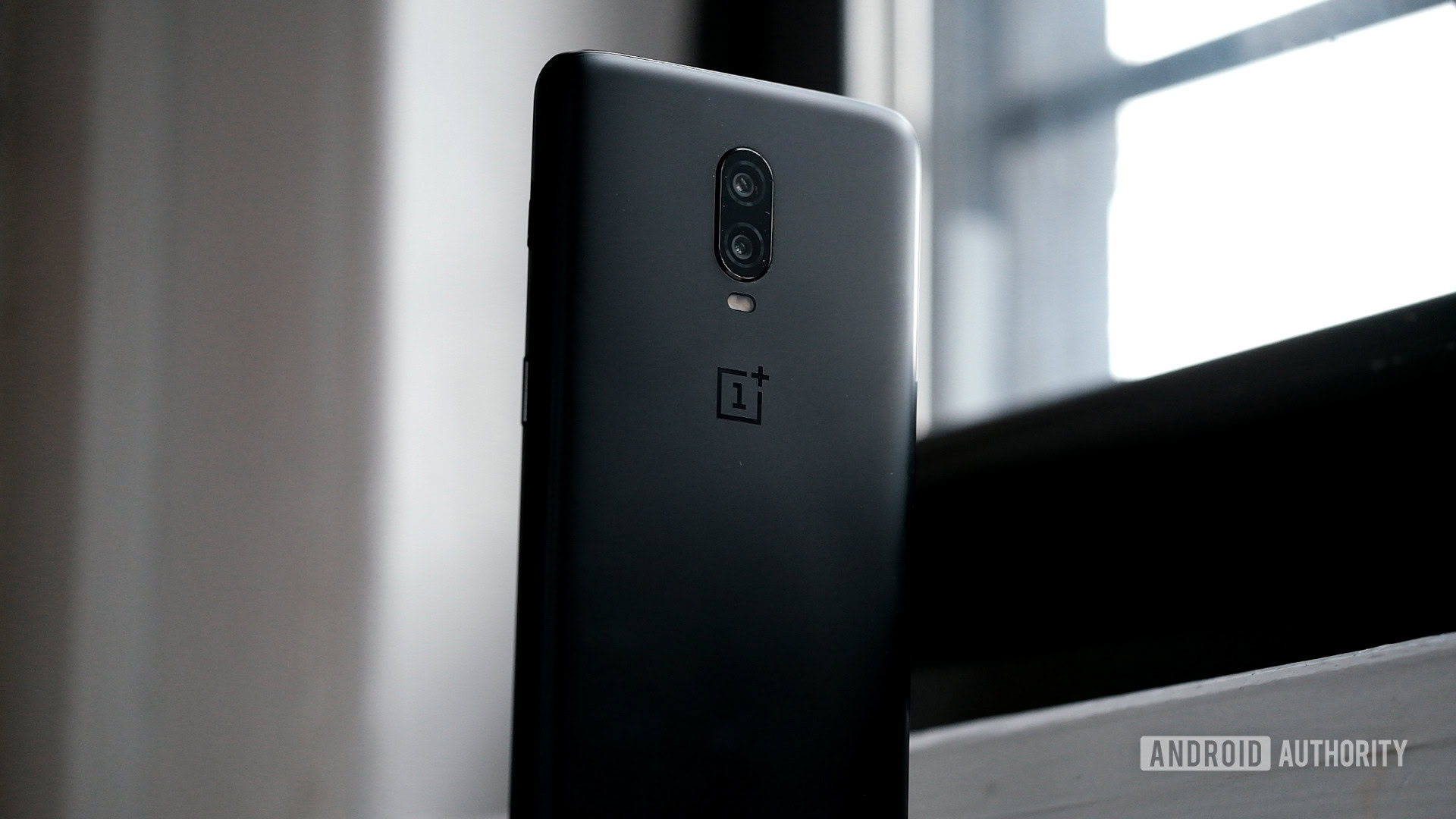
Performance
OnePlus’ phones are all about being fast and smooth, and the 6T delivers on this promise. OxygenOS has been one of the most lightweight versions of Android for a while now, offering a few extra features and optimizations to make OnePlus’ phones feel fast. I never saw any significant frame drops during my time with the device, and things like Gaming Mode help give an extra boost of performance when you need it.
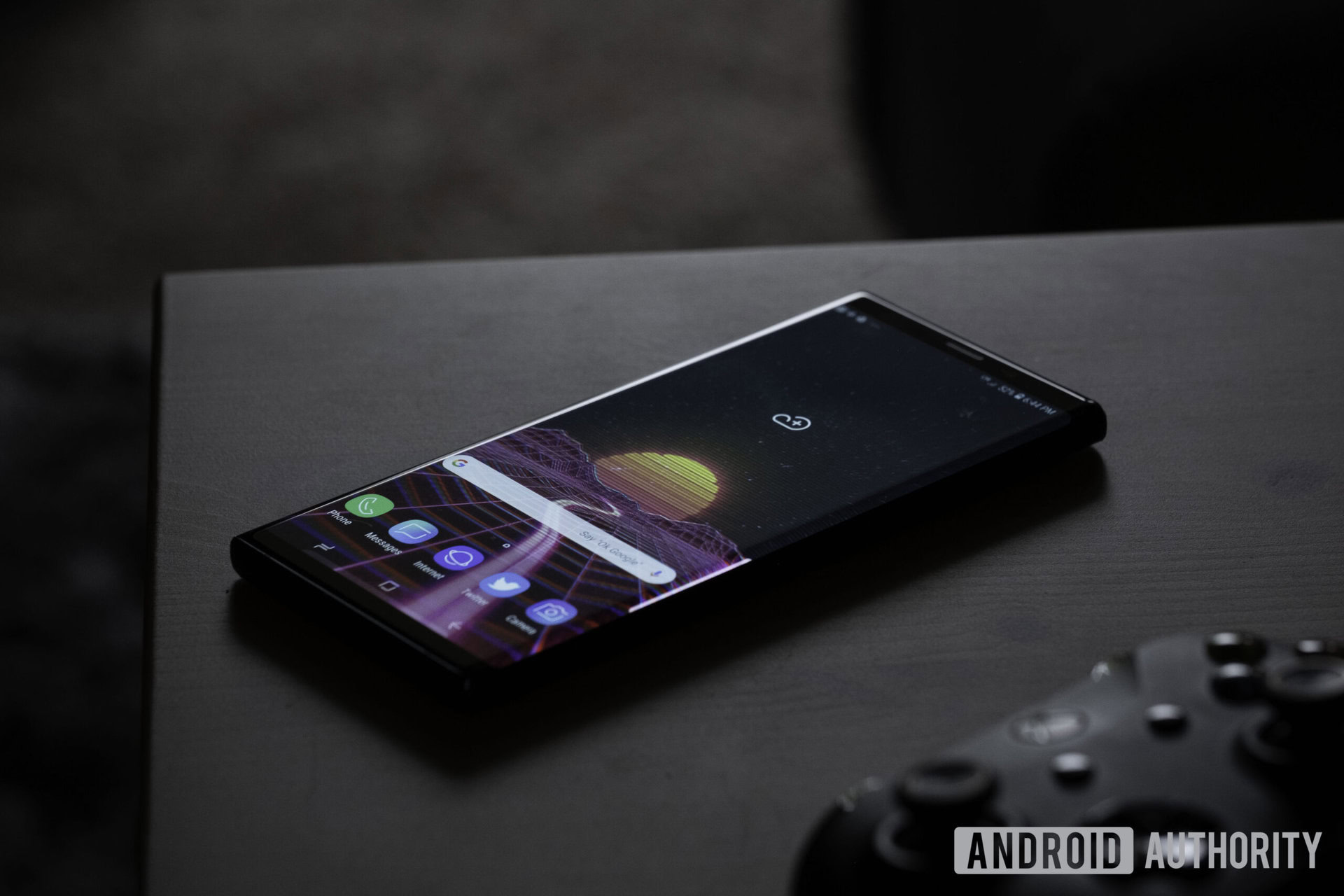
In benchmarks, the OnePlus 6T performs admirably, even beating out the Samsung Galaxy Note 9 in our testing.
We put the 6T through Geekbench 4, AnTuTu, and 3DMark benchmark tests. You can see the results below.
Geekbench 4 gave the OnePlus 6T a single-core score of 2,368. In comparison, the OnePlus 6 scored 2,454, and the Galaxy S9 scored 2,144. The OnePlus 6T achieved a multi-core score of 8,843, while the OnePlus 6 scored 8,967, and the Galaxy S9 scored 8,116.
The OnePlus 6T scored 4,697 in 3DMark, while the OnePlus 6 and Galaxy S9 scored 4,680 and 4,672, respectively.
Finally, the OnePlus 6T scored 292,266 in AnTuTu, compared to the OnePlus 6’s 262,614 and the S9’s 266,559.
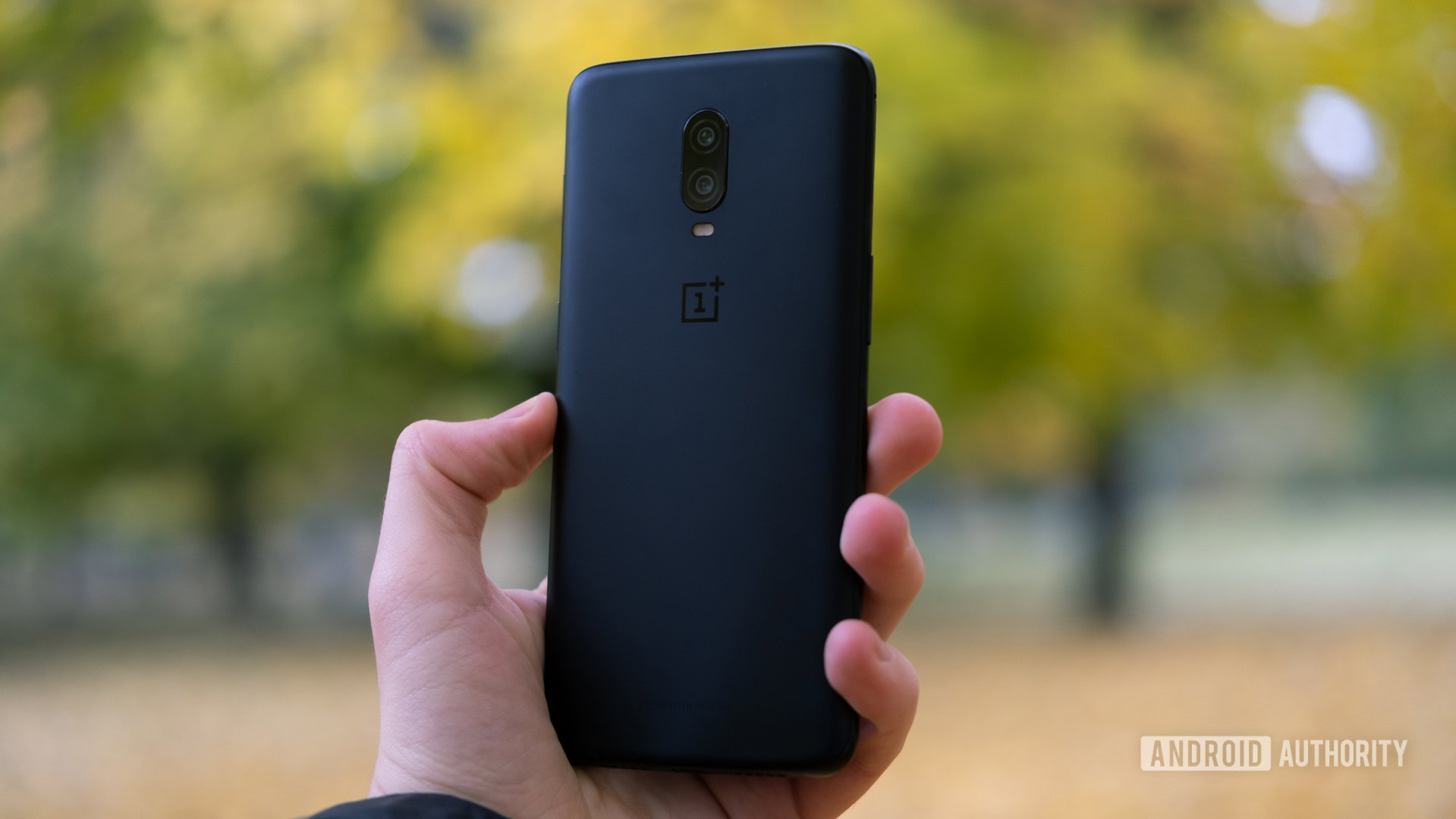
Hardware
OnePlus doesn’t skimp on hardware. The 6T runs the same Qualcomm Snapdragon 845 as the last generation, with 6 or 8GB of RAM and 128 or 256GB of storage to boot. It’s interesting that the company would maintain the same core specifications as the OnePlus 6, but it improved on a few other departments instead to keep the device worth buying.
You're trading a headphone jack and some thickness for more battery, an in-screen fingerprint reader, and a smaller notch.
OnePlus bumped the battery capacity in the OnePlus 6T from 3,300 to 3,700mAh, which it says should increase battery life by about 20 percent. Technically this is only a 12 percent capacity increase, but software improvements in RAM management help boost the 6T’s total screen-on time.
I frequently got around eight hours of screen-on time, some of the best battery life I’ve ever had in a smartphone.
This is some of the best battery life I have ever had in an Android phone, and the OnePlus 6T doesn’t even have a monster battery like the 4,000mAh Razer Phone 2 or 4,200mAh HUAWEI Mate 20 Pro. Software adjustments aiding in RAM management are being pushed to the OnePlus 6 as well, so its battery live should improve too.
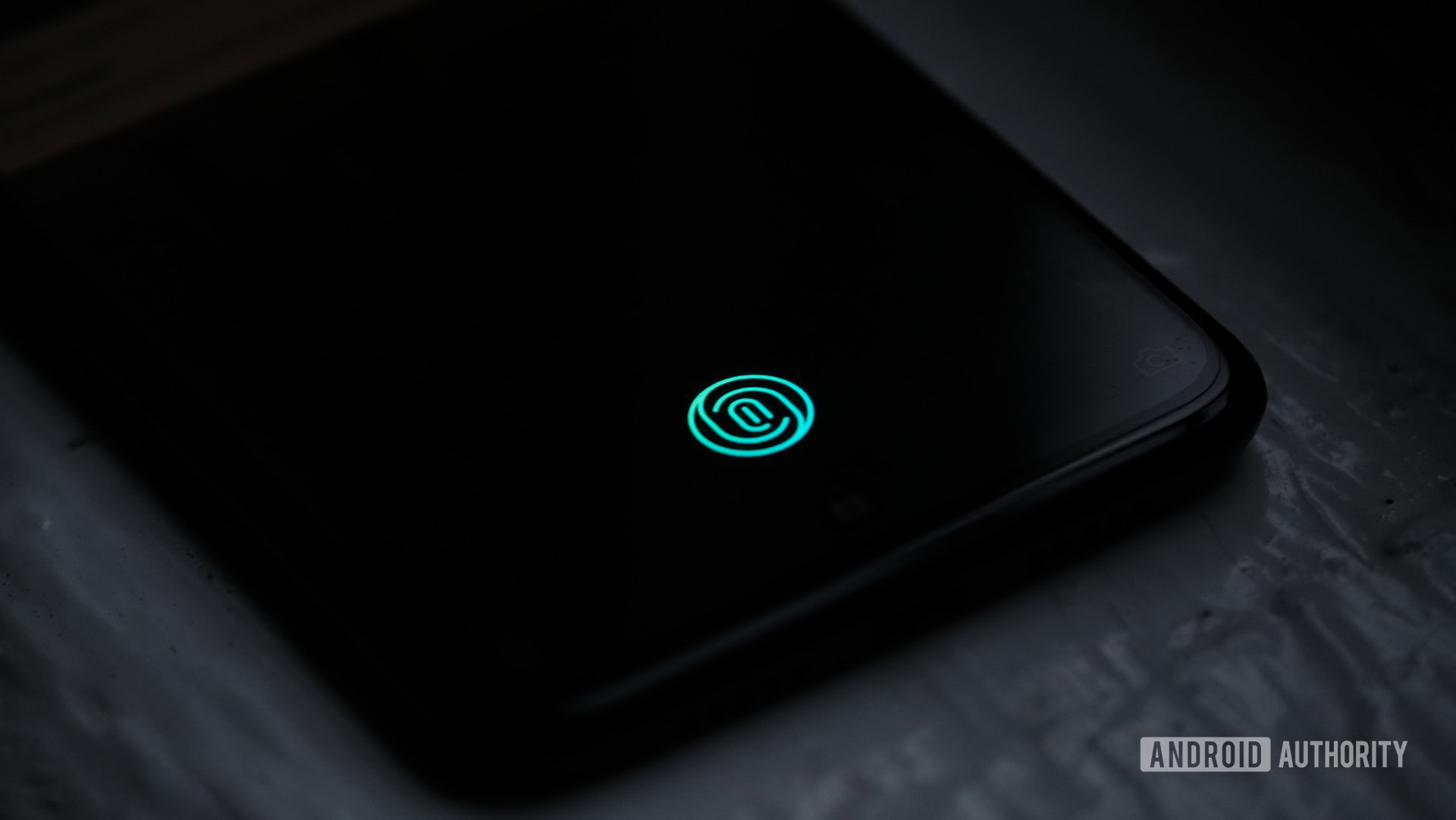
Probably the most highly marketed addition to the OnePlus 6T is the in-screen fingerprint reader. This optical reader shoots light up at your finger to read your print. It completely replaces the fingerprint reader on the rear of the device and works for logging into secure apps, as well as unlocking the device.
Unfortunately, this scanner is often rather slow and sometimes inaccurate, though it’s definitely much better than first-generation readers in phones like the HUAWEI Mate RS. The technology still seems to need another generation to mature before it is as seamless as traditional fingerprint readers. OnePlus says this should get better over time, learning your fingerprint as you use it. I haven’t found this to be the case during my 11 days with the device, but I hope the success rate gets better after a few software updates.
Related: Best Bluetooth headphones for your headphone jack-less OnePlus 6T
As mentioned before, the OnePlus 6T jettisons the headphone jack, replacing it with a fake speaker grill. This move doesn’t make a lot of sense to me, but OnePlus said it needed that space for a bigger battery and larger sound chamber. OnePlus also said it had been planning this move for a while and thought now was the right time. User polls would strongly suggest against that, but it is what it is.

Camera
The OnePlus 6T has two cameras on the rear — one 16MP main shooter with a f/1.7 aperture and OIS, and a secondary 20MP shooter primarily used for depth sensing. The front-facing camera is 16MP.
OnePlus hasn’t actually updated the camera hardware in the OnePlus 6T, but it made some adjustments to its processing and portrait algorithms, as well as adding a new Night Mode setting. The OnePlus 6’s camera wasn’t exactly bad, but it seemed a bit desaturated and soft compared to its competitors. This remains true here, though I definitely noticed better color and sharpness in better lit scenarios.

While photos are definitely flatter than other mobile cameras on the market, I personally prefer this kind of processing to overly punchy, highly saturated sensors. Sharpness is good but not overdone like many mobile cameras right now.
The 6T struggles pretty badly in dimly lit scenarios. To reduce noise, the sensor will add a lot of smoothing, which makes images pretty muddy. To get around this, OnePlus has added a new “Night” mode, which takes a long exposure to increase sharpness and dynamic range. If you were hoping this mode would magically turn night into day like Night Sight on the Pixel, you will be sorely disappointed. This mode definitely aids in sharpness a little bit, but it’s hardly noticeable.

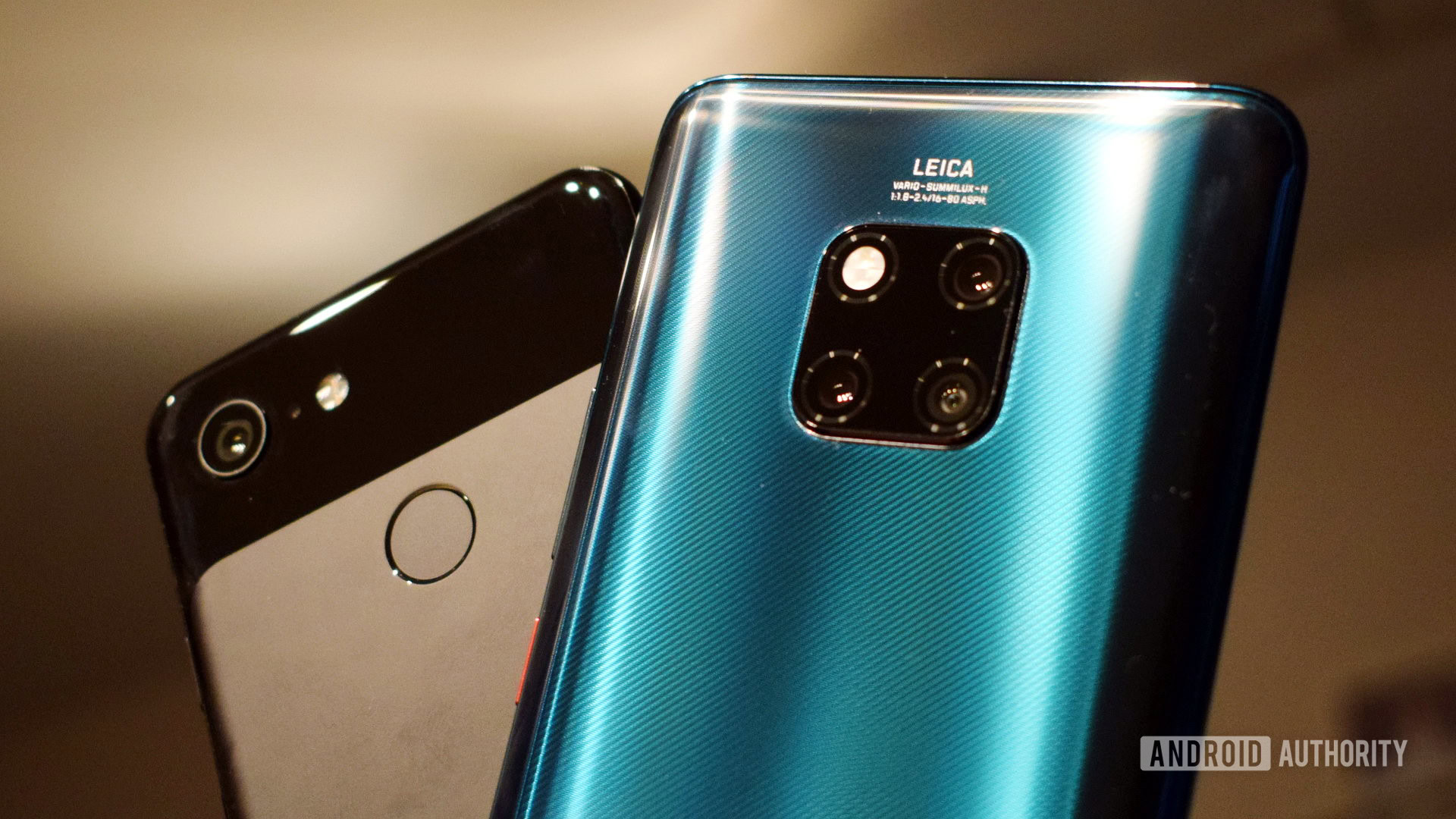
OnePlus gloated about this feature quite a bit, mentioning how its two-second exposure was much shorter than most other night modes on the market. While this is technically true, it takes about four or five seconds to fully process, which is still pretty long.
The front-facing camera on the OnePlus 6T is a bit soft. In both standard mode and portrait mode it tends to smooth out skin. This could look good in some circumstances, but here it just looks artificial. It’s also even more desaturated than the rear camera and tends to wash faces out.
Portrait mode, on the other hand, is quite good. Cutouts are generally solid, though accuracy can be hit or miss at times. In the examples above, you can see how the camera had trouble with the subject’s ears when photographed against a similarly-colored wall. Even so, I’m happy with the sharpness in this mode.
Specialized portrait modes are coming, but have not yet materialized, so we’ll have to wait and see how well they work.
Finally, we get to night mode, which OnePlus designed to help with dynamic range and sharpness in dimly-lit scenes. This definitely seems to be the case, and it is actually quite good at preserving highlights. The mode will also give you more detail where night scenes would generally be a bit smudgy, which is nice to see. This is effectively the same result as Google’s HDR+ mode which takes almost no time to process though, so I really think they should just add this processing into the default auto mode.
Check out our full gallery below to see a wide variety of samples from our review period, or you can pixel peep them in full resolution here!
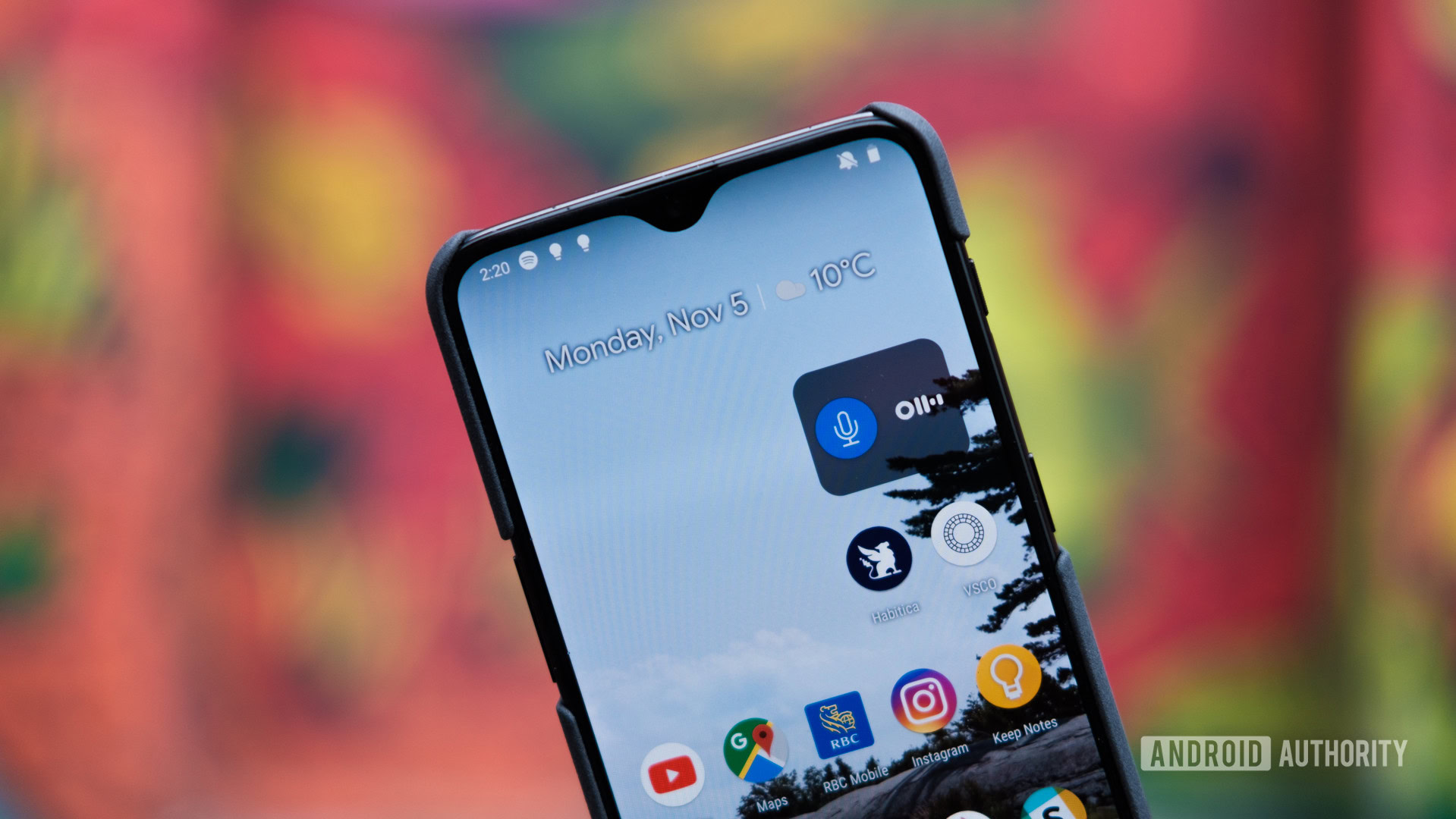
Software
OxygenOS is my favorite skin of Android ever. It hasn’t changed much since the OnePlus 6, but I don’t really care. The 6T launches with Android 9.0 Pie, with some updated navigation gestures to make the phone a bit easier to use, and some background optimizations.
The first improvement is something called Smart Boost, which takes advantage of the extra RAM OnePlus crammed into the device to store key app data in memory, allowing them to open between five and 20 percent faster. Because two of the three models OnePlus offers have 8GB of RAM, there is plenty of extra memory to be had. Even the 6GB model likely handles this fine.
OxygenOS is my favorite skin of Android ever.
Smart Boost works on apps selected by OnePlus — primarily a selection of gaming apps, though more optimized apps are planned for the future. It would be nice to see some kind of system-wide or user-selected app data storage, but that probably won’t happen. Either way, it’s a clever way to utilize unused hardware.
OnePlus has also updated its Gaming Mode by allowing for transparent floating message notifications. Gaming Mode has traditionally blocked all incoming notifications and messages to allow for a distraction-free experience, but OnePlus now allows for more customization around what gets through.
Besides those changes, there isn’t a lot new here. Android Pie offers updates too numerous to explain in this review, so we suggest you head over to our dedicated Android 9.0 Pie review to see what all the fuss is about.
All of these software tweaks and improvements will be coming to the OnePlus 6 as well.
Specifications
| OnePlus 6T | |
|---|---|
Display | 6.41-inch AMOLED 2,340 x 1,080 resolution 402ppi 19.5:9 screen ratio Corning Gorilla Glass 6 |
SoC | Qualcomm Snapdragon 845 Octa-core, 10nm, up to 2.8GHz |
GPU | Adreno 630 |
RAM | 6GB/8GB LPDDR4X |
Storage | 128GB/256GB UFS 2.1 2-LANE |
Cameras | Rear cameras Main: 16MP, f/1.7 aperture Secondary: 20MP, f/1.7 aperture OIS & EIS Video: 4K resolution video at 30/60fps Front cameras Main: 16MP, f/2.0 aperture EIS: Yes Video: 1080P video at 30fps |
Audio | USB 2.0 Type-C No headphone jack Bottom-facing speaker Dirac HD Sound Dirac Power Sound |
Battery | 3,700mAh battery Non-removable Fast Charge (5V 4A) |
IP rating | N/A |
Sensors | In-screen fingerprint sensor Hall Accelerometer Gyroscope Proximity Ambient light sensor Electronic compass Sensor hub |
Network | LTE: Supports 5xCA, 64QAM, 256QAM & 4x4 MIMO, up to DL CAT16 (1Gbps)/UL CAT13 (150 Mbps) depending on carrier support NA/EU: FDD LTE: Band 1/2/3/4/5/7/8/12/13/17/18/19/20/25/26/28/29/30/32/66/71 TDD LTE: Band 34/38/39/40/41/46 TD-SCDMA: Band 34/39 UMTS(WCDMA): Band 1/2/4/5/8/9/19 CDMA: BC0/BC1GSM: 850/900/1800/1900 MHz CN/IN: FDD LTE: Band 1/2/3/4/5/7/8/1213/17/18/19/20/25/26/28/29/66 TDD LTE: Band 34/38/39/40/41 TD-SCDMA: Band 34/39 UMTS(WCDMA): Band 1/2/4/5/8/9/19 CDMA: BC0/BC1 GSM: 850/900/1800/1900 MHz |
Connectivity | Wi-Fi: 2x2 MIMO, Wi-Fi 802.11 a/b/g/n/ac, 2.4G/5G Bluetooth 5.0, support aptX & aptX HD NFC GPS, GLONASS, BeiDou, Galile WLAN |
SIM | Dual nano-SIM slot (single on T-Mobile model) |
Software | OxygenOS based on Android 9 Pie |
Colors | Mirror Black, Midnight Black |
In-box | USB Type-C to 3.5mm adapter Screen protector (pre-applied) Translucent phone Case OnePlus Fast Charge Type-C cable OnePlus Fast Charge power adapter SIM tray ejector Quick start guide Safety information |
OnePlus 6T podcast!
Price and availability
The OnePlus 6T is available now from OnePlus.com and T-Mobile in the United States. This is actually the biggest news of the entire launch, as this is the first time a OnePlus device has been widely available in the United States through a carrier.
You can walk into any of the 5,600 T-Mobile stores throughout the United States and buy the device today, though it will only be available in the 8GB and 128GB model for $579. Keep in mind the T-Mobile variant is a different SKU, meaning you’ll likely get software updates a bit slower than if you bought the device directly from OnePlus.
Check out our dedicated article here to see the differences between the unlocked and T-Mobile models.
The pricing of the OnePlus 6 is as follows:
- 6GB RAM /128GB Storage— $549
- 8GB RAM /128GB Storage— $579
- 8GB RAM/256GB Storage — $629
Global pricing and availability can be found right here.
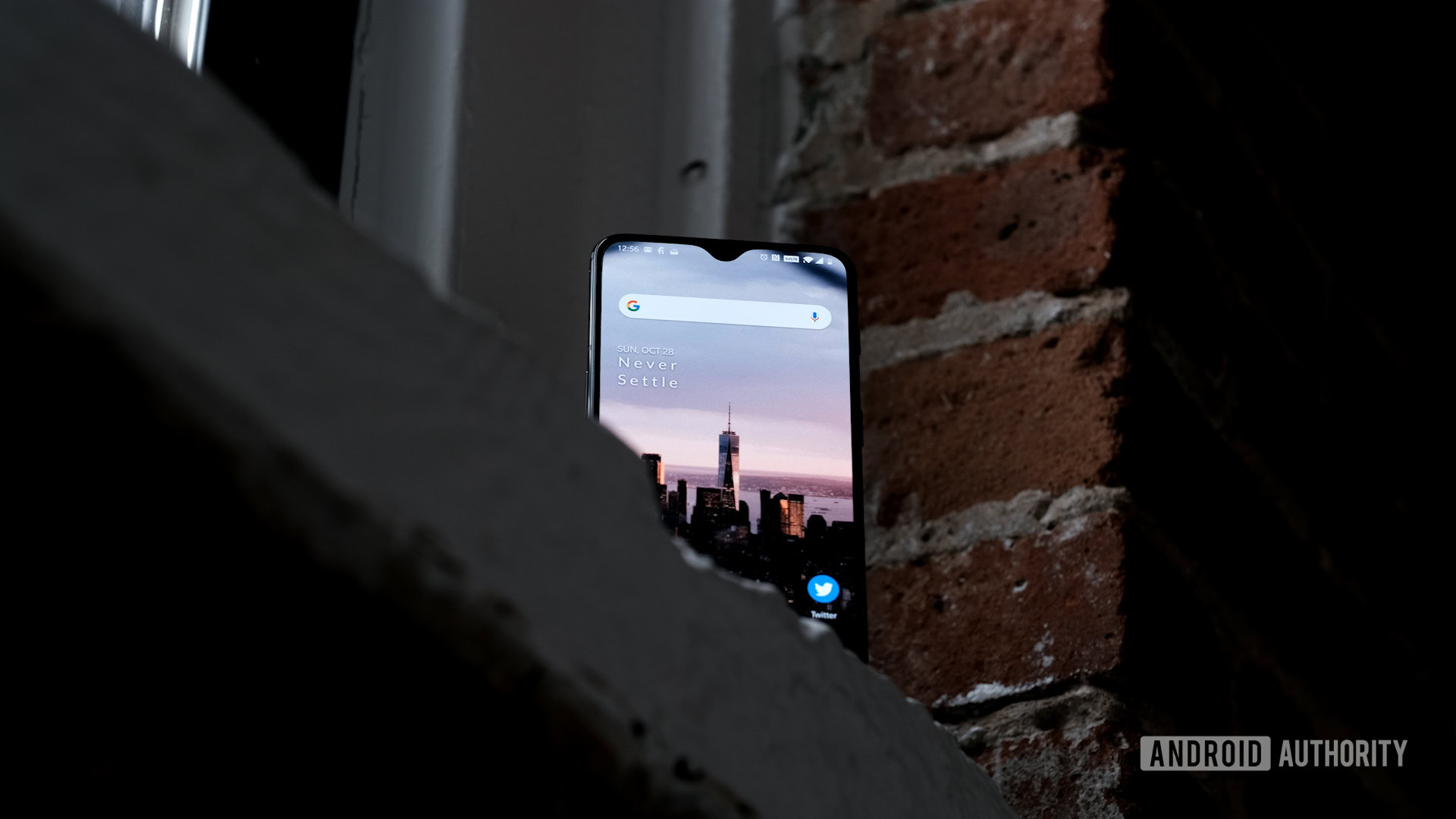
OnePlus 6T review: Final thoughts
Starting at $549, OnePlus’ latest flagship is still one of the best deals you can get on a smartphone right now. No other manufacturer has perfected the marriage of hardware and software quite as well as OnePlus, and even Google is still having issues optimizing its vision of Android for its hardware.
It’s impossible to review the OnePlus 6T without comparing it to the OnePlus 6. The two devices are so similar, there is no way I can recommend upgrading to the OnePlus 6T if you already own a OnePlus 6. Both phones have almost the exact same specifications, save the battery and in-screen fingerprint reader. The 6 will even get all the software improvements in the 6T.
If you’re on something like a 5T or older, very few devices offer the speed and power of the OnePlus 6T for under $600. This phone is even more of a steal if you take advantage of T-Mobile’s trade-in deal to get the 8GB and 128GB model for just $279. That’s basically robbery for a device of this quality.
As usual, you won’t be disappointed with OnePlus’ new phone. It doesn’t have specialized features like an S Pen or a 40MP camera, but it nails the fundamentals to a higher degree than nearly any other device in the Android ecosystem. If you’re looking for the best value on a U.S. carrier right now, the OnePlus 6T is it.